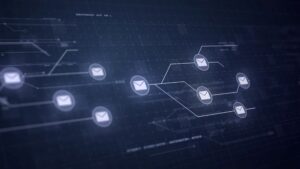Schlagwort: ‘E-Mail’
Changeover Within the GitLab Login Process

Source: GitLab
On May 3, 2023, the login process for our GitLab instances (git.rwth-aachen.de and git-ce.rwth-aachen.de) will be updated as part of a necessary maintenance.
However, in order to be able to log in to the GitLab instances of the RWTH after the maintenance, the primary e-mail address stored in GitLab must match the contact e-mail address in the Identity Management of the RWTH. Otherwise, if the e-mail addresses are different, you may get a login error after the system changeover.
Protecting the Climate From Your Desk

Source: Pixabay
At first glance, e-mail seems to be an environmentally friendly alternative to traditional letters: You don’t need paper and the letter doesn’t have to travel halfway around the world to the recipient by car, ship or plane. However, e-mails also cause greenhouse gas emissions in a completely different way – probably more than you think.
In today’s article, we explain why e-mails are also harmful to the environment to a certain extent. With our tips, we are sure you will be able to adopt a more ecological approach to digital communication and make a joint contribution to climate protection.
Email Security – Why Are Redirections Bad?

Source: Freepik
The third part of our series of articles on e-mail security deals with the identification protocol DKIM and the standard method for e-mail authentication DMARC.
In our first article and second article on the topic of e-mail security, we informed you about the origins of e-mail and the current statistics in mail traffic at RWTH. In addition, we explained what the SMTP protocol is and what problems it can cause.
#GoodToKnow: How to create distribution groups?

Source: Freepik
Recently, we told you about mailing lists and how to request them. In this blog post, we’ll introduce you to the difference with distribution groups and describe how to create and manage them.
Email Security – The SMTP Protocol and Its Problems (Sending and Receiving)

Source: Freepik
In our first article on the topic of e-mail security, we gave an insight into the historical development of email. We briefly explained how email exchange works and referred to the statistics of the email service at RWTH Aachen University.
Today we’ll tell you about the transmission protocol “Simple Mail Transfer Protocol” (SMTP) and its pitfalls.
Protecting the Climate From Your Desk

Source: Pixabay
At first glance, e-mail seems to be an environmentally friendly alternative to traditional letters: You don’t need paper and the letter doesn’t have to travel halfway around the world to the recipient by car, ship or plane. However, e-mails also cause greenhouse gas emissions in a completely different way – probably more than you think.
In today’s article, we explain why e-mails are also harmful to the environment to a certain extent. With our tips, we are sure you will be able to adopt a more ecological approach to digital communication and make a joint contribution to climate protection.
Email Security – E-Mail & Mail Statistics at RWTH

Source: Freepik
About 50 years ago, the first e-mail was sent – albeit between two computer systems that were part of the same local network. In the 1980s, the internet was opened up to a larger circle of users and e-mail was given its own transmission protocol “Simple Mail Transfer Protocol” (SMTP).
Even today, the exchange of messages via e-mail is undoubtedly an important way of exchanging information between parties via an asynchronous communication channel.
New E-Mail Lifecycle Started – What you Should Know!

Source: Pixabay
If you weren’t part of RWTH Aachen University for a while, you might already know it – the E-Mail Lifecycle. For the e-mail domain @rwth-aachen.de it is starting today again. That means, if you have left the RWTh, it will be checked regularly if your mailbox is still in use – if not, it will be deleted. In this article you will learn how this works and what you should pay attention to. Read the rest of this entry »






